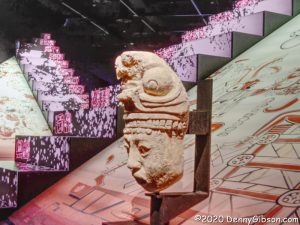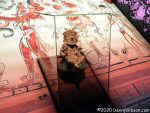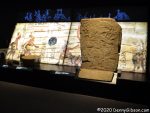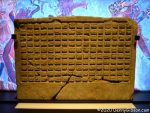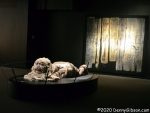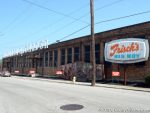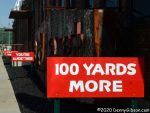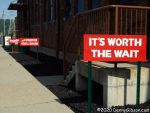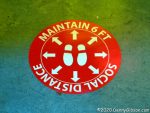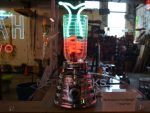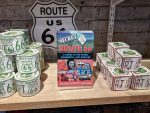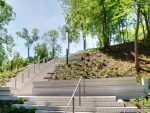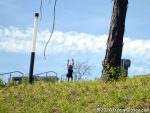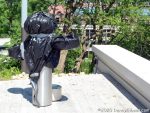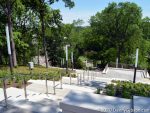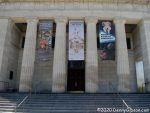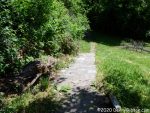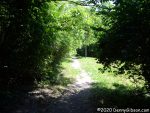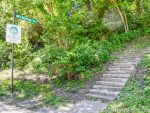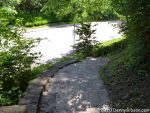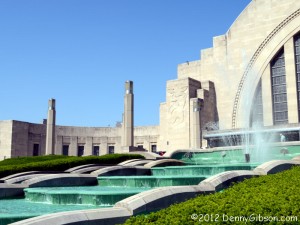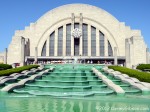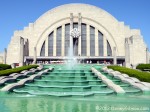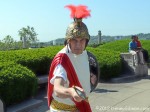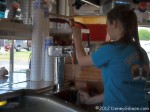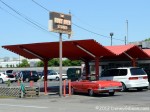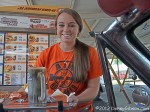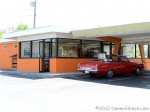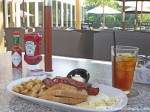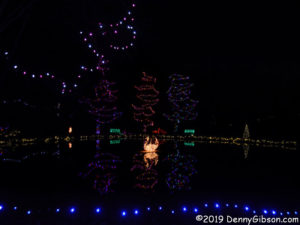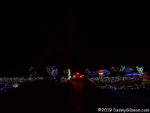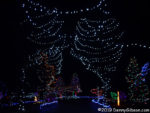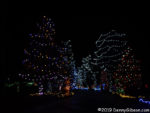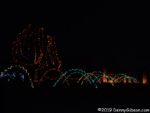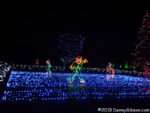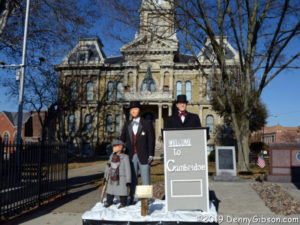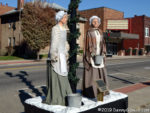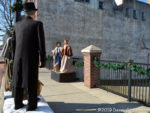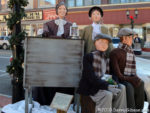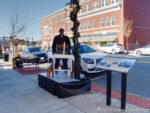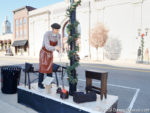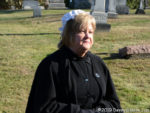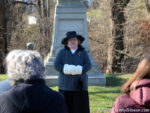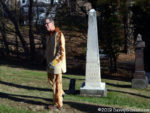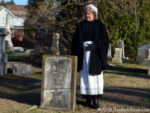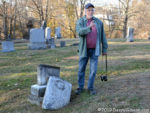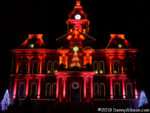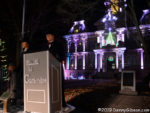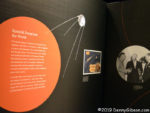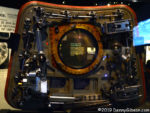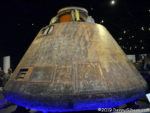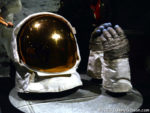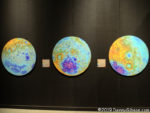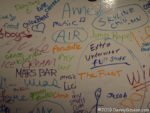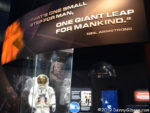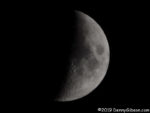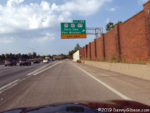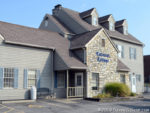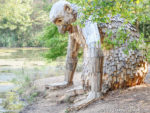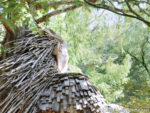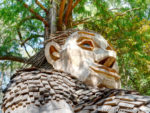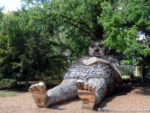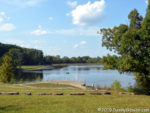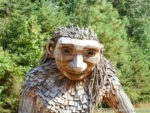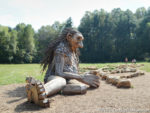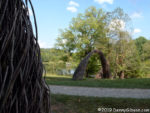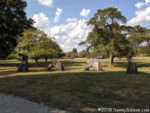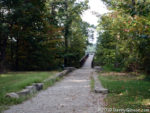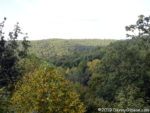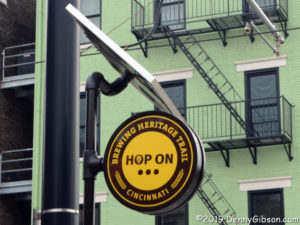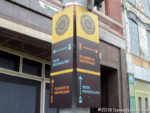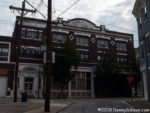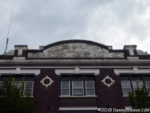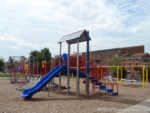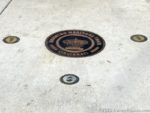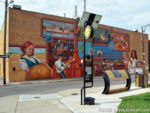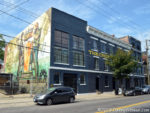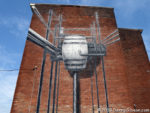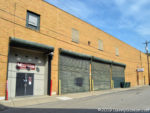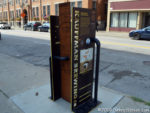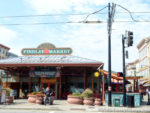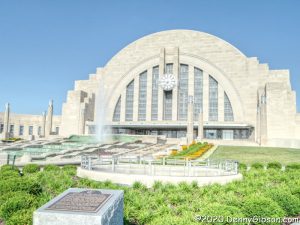 The Cincinnati Reds opened their season on Friday instead of March 26 as planned. Friday is also the day I made the Cincinnati Museum Center visit I’d postponed a couple of weeks earlier. It was supposed to happen on the same day as my Maya exhibit visit, but a service appointment got in the way. The delay moved it from the members-only preview week to a week after the general opening and fountain turn on. Water now shoots high in the air and cascades down through that series of pools in front of Union Terminal. The marker in the foreground stands near where the world’s first professional baseball team had their home plate. Less than two miles away, in an empty stadium, the modern version of the team got the shortened 2020 season rolling with a 7-1 win.
The Cincinnati Reds opened their season on Friday instead of March 26 as planned. Friday is also the day I made the Cincinnati Museum Center visit I’d postponed a couple of weeks earlier. It was supposed to happen on the same day as my Maya exhibit visit, but a service appointment got in the way. The delay moved it from the members-only preview week to a week after the general opening and fountain turn on. Water now shoots high in the air and cascades down through that series of pools in front of Union Terminal. The marker in the foreground stands near where the world’s first professional baseball team had their home plate. Less than two miles away, in an empty stadium, the modern version of the team got the shortened 2020 season rolling with a 7-1 win.

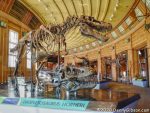 The museum center is using timed entry to keep the number of people in the building below capacity although that hasn’t yet been an issue even though attendance has been slowly increasing. Three museums are part of the CMC. Because just about everything in it is hands-on, the Children’s Museum remains closed as do two of the major components of the Natural History Museum. Keeping the replica limestone cave and the Science Interactives Gallery sanitized just isn’t practical, and some interactive experiences have been temporarily removed as well. I know all of that makes things considerably less entertaining for younger visitors but the most prominent residents of Dinosaur Hall are still there and they’re still awesome.
The museum center is using timed entry to keep the number of people in the building below capacity although that hasn’t yet been an issue even though attendance has been slowly increasing. Three museums are part of the CMC. Because just about everything in it is hands-on, the Children’s Museum remains closed as do two of the major components of the Natural History Museum. Keeping the replica limestone cave and the Science Interactives Gallery sanitized just isn’t practical, and some interactive experiences have been temporarily removed as well. I know all of that makes things considerably less entertaining for younger visitors but the most prominent residents of Dinosaur Hall are still there and they’re still awesome.
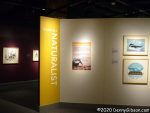
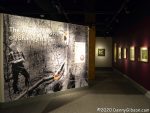
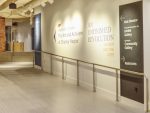 There are currently two temporary exhibits that are included in CMC admission. I checked out “Inspired by Nature” first. If you’ve spent any time looking over downtown Cincinnati, there’s a good chance you’ve seen some of Charley Harper’s art. It appears in several murals with “Homecoming (Blue Birds)”, on Court Street, being the most well known. The placard at the left of the last picture contains a Harper quote that probably sums up the man as well as any.
There are currently two temporary exhibits that are included in CMC admission. I checked out “Inspired by Nature” first. If you’ve spent any time looking over downtown Cincinnati, there’s a good chance you’ve seen some of Charley Harper’s art. It appears in several murals with “Homecoming (Blue Birds)”, on Court Street, being the most well known. The placard at the left of the last picture contains a Harper quote that probably sums up the man as well as any.
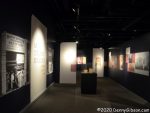

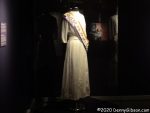 This is the centennial year for the passage of the constitutional amendment that allowed women to vote. “An Unfinished Revolution: Women and the Vote” tells of the struggle that preceded that breakthrough as well as the struggle that continues today in pursuit of equality. The 19th Amendment was passed on May 21, 1919, and ratified on August 20, 1920. In between those events, Ohio legislators took steps to assure that women could vote in the 1920 presidential election even if the amendment was not ratified in time. In the center of the first picture, the 1919 and 1920 Hamilton County voter rolls give a visual indication of just how significant a change that was.
This is the centennial year for the passage of the constitutional amendment that allowed women to vote. “An Unfinished Revolution: Women and the Vote” tells of the struggle that preceded that breakthrough as well as the struggle that continues today in pursuit of equality. The 19th Amendment was passed on May 21, 1919, and ratified on August 20, 1920. In between those events, Ohio legislators took steps to assure that women could vote in the 1920 presidential election even if the amendment was not ratified in time. In the center of the first picture, the 1919 and 1920 Hamilton County voter rolls give a visual indication of just how significant a change that was.
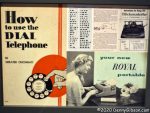

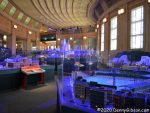 Some portions of the Cincinnati History Museum are closed but I think that has at least as much to do with establishing new and reworked exhibits after the big renovation as with anything COVID-19 related. I was excited to find that “Cincinnati in Motion” is now complete. New to me sights included Proctor and Gamble’s Ivorydale complex and Crosley Field where I watched several Reds games and one Beatles concert. Neither “Shaping Our City” nor “You Are Here” were entirely finished when I was here last, but they are now. As we (at least I) struggle to outsmart our phones, it helps being reminded that all new technology requires some learning.
Some portions of the Cincinnati History Museum are closed but I think that has at least as much to do with establishing new and reworked exhibits after the big renovation as with anything COVID-19 related. I was excited to find that “Cincinnati in Motion” is now complete. New to me sights included Proctor and Gamble’s Ivorydale complex and Crosley Field where I watched several Reds games and one Beatles concert. Neither “Shaping Our City” nor “You Are Here” were entirely finished when I was here last, but they are now. As we (at least I) struggle to outsmart our phones, it helps being reminded that all new technology requires some learning.
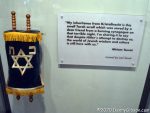
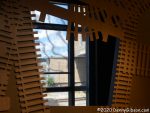
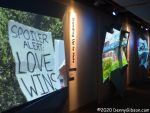 Another thing that happened during the two weeks between my planned and actual visit, was the reopening of the Holocaust and Humanity Center. Entrance to the HHC is not included in CMC admission but it is is the same building and discounted combination tickets are available. This was my second visit and I again found the personal stories and keepsakes extremely interesting. The pictured Torah was saved from a burning synagogue on Kristallnacht. I had taken a picture of the only window in the museum on my first visit but I had not actually looked out of it and that is the whole point of it being there. It provides a view of railroad tracks which is how many holocaust refugees arrived in Cincinnati. The third photo is from the “Humanities Gallery” which deals with today rather than history. I took several pictures of the row of screens and their rotating set of images and picked one to include in this post. Then, as I actually put this post together, I discovered that I had unwittingly selected a picture that was a near duplicate of one I had posted from my first visit. That picture, which can be seen here, obviously made an impression on me undoubtedly because it is evidence of the bigotry present today. I did not want to just repeat that picture and decided I didn’t want to repeat the feeling either. I went with something much more hopeful.
Another thing that happened during the two weeks between my planned and actual visit, was the reopening of the Holocaust and Humanity Center. Entrance to the HHC is not included in CMC admission but it is is the same building and discounted combination tickets are available. This was my second visit and I again found the personal stories and keepsakes extremely interesting. The pictured Torah was saved from a burning synagogue on Kristallnacht. I had taken a picture of the only window in the museum on my first visit but I had not actually looked out of it and that is the whole point of it being there. It provides a view of railroad tracks which is how many holocaust refugees arrived in Cincinnati. The third photo is from the “Humanities Gallery” which deals with today rather than history. I took several pictures of the row of screens and their rotating set of images and picked one to include in this post. Then, as I actually put this post together, I discovered that I had unwittingly selected a picture that was a near duplicate of one I had posted from my first visit. That picture, which can be seen here, obviously made an impression on me undoubtedly because it is evidence of the bigotry present today. I did not want to just repeat that picture and decided I didn’t want to repeat the feeling either. I went with something much more hopeful.
Many things at Union Terminal are now open but absolutely nothing is back to normal. That’s true of the whole world, however, and the folks at CMC and HHC seem to be doing the right thing. Kids have it the worst. I can think of nothing equivalent to the learning that automatically comes along with all the fun in the Children’s Museum and Science Interactives Gallery. I’m sad that they are closed but know that the risk of having them open is too great to even think about. A few interactive displays exist in the Cincinnati History Museum but they are in places that can be constantly monitored and sanitized frequently. In the HHC, pushbuttons are used to activate displays and recordings. Everyone entering is given a rubber-tipped stylus to handle the button-pushing and they are encouraged to “take it with you when you vote”. Hand sanitizer is available throughout all the museums. Every employee and guest I saw was wearing a mask and many staff members also had a face shield. In some sense, this could be considered a good time for adults to visit. It’s not crowded and access to both displays and docents is easy. But empty museums are not, in general, a good thing at all. I really look forward to the return of flocks of noisy kids figuring out where that ball is going to fall and which direction that gear is going to turn.
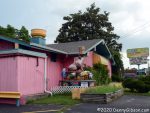 The picture at right was taken two weeks ago on my way to the Cincinnati Museum Center to see the Maya exhibit. Sugar n’ Spice has operated on Reading Road, about five miles north of downtown Cincinnati, since 1941. They are taking COVID-19 seriously with limited capacity, masked staff, plexiglass dividers, and more. I had heard something about plans to open a second location but I hadn’t really paid any attention to details. As I finished up my original wispy thin pancakes, I struck up a conversation with a manager who showed me some pictures of the new location. I learned that 1) the grand opening was happening the very next day and 2) the new store wasn’t just near the old Sycamore Street diner, it was in the diner.
The picture at right was taken two weeks ago on my way to the Cincinnati Museum Center to see the Maya exhibit. Sugar n’ Spice has operated on Reading Road, about five miles north of downtown Cincinnati, since 1941. They are taking COVID-19 seriously with limited capacity, masked staff, plexiglass dividers, and more. I had heard something about plans to open a second location but I hadn’t really paid any attention to details. As I finished up my original wispy thin pancakes, I struck up a conversation with a manager who showed me some pictures of the new location. I learned that 1) the grand opening was happening the very next day and 2) the new store wasn’t just near the old Sycamore Street diner, it was in the diner.
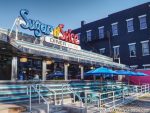
 I stopped here on Friday on my way to see the dinosaurs and suffragettes. It’s a 1955 Mountain View diner that was moved from Massillon, Ohio, to the Over the Rhine section of Cincinnati in 1984. It then operated for many years as The Diner on Sycamore. Its most recent life was as Joe’s Diner which closed in 2016. In between, it had a couple years of life as Vinyl and was dormant for several years. I really like what Sugar n’ Spice has done here and I really like their chances of success. The middle of a pandemic is certainly not the ideal time to open a restaurant but everything was, of course, in motion well before the pandemic hit. Although it’s a family-owned business, Sugar n’ Spice is really an established brand that has brought their bright colors and slightly whimsical decor along with a reputation for quality to a classic factory-built diner. The counter is not currently being used but two outside dining areas are available along with plexiglass separated booths in the Mountain View and in the brick and mortar building it is attached to. I’d totally forgotten how big Sugar n’ Spice omelets are. Five eggs aerated. This is what I had for breakfast — and dinner.
I stopped here on Friday on my way to see the dinosaurs and suffragettes. It’s a 1955 Mountain View diner that was moved from Massillon, Ohio, to the Over the Rhine section of Cincinnati in 1984. It then operated for many years as The Diner on Sycamore. Its most recent life was as Joe’s Diner which closed in 2016. In between, it had a couple years of life as Vinyl and was dormant for several years. I really like what Sugar n’ Spice has done here and I really like their chances of success. The middle of a pandemic is certainly not the ideal time to open a restaurant but everything was, of course, in motion well before the pandemic hit. Although it’s a family-owned business, Sugar n’ Spice is really an established brand that has brought their bright colors and slightly whimsical decor along with a reputation for quality to a classic factory-built diner. The counter is not currently being used but two outside dining areas are available along with plexiglass separated booths in the Mountain View and in the brick and mortar building it is attached to. I’d totally forgotten how big Sugar n’ Spice omelets are. Five eggs aerated. This is what I had for breakfast — and dinner.

